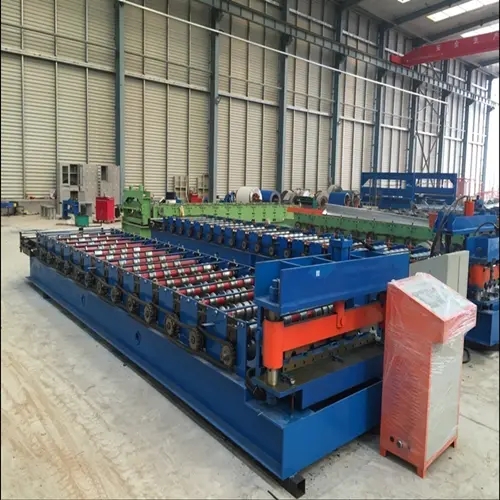
Achieving Efficiency in Roll Forming Manual Size Adjustment using Spacers
Roll forming is a widely adopted manufacturing process utilized to convert flat sheets of metal into specific shapes through a series of bending operations. It is a popular choice in various industries due to its efficiency and capability to produce complex geometries with precision. However, one of the challenges faced by manufacturers utilizing roll forming machines is the need for flexibility in changing sizes of the end products based on specific requirements. In this article, we will explore how the manual adjustment of roll forming machines using spacers can help streamline this process and enhance productivity.
Understanding Roll Forming
Roll forming involves passing a continuous strip of metal through a series of rollers that progressively shape it into the desired form. The process usually operates at high speeds, enabling manufacturers to produce large quantities of products efficiently. Common applications of roll forming include the manufacturing of building materials, automotive components, and furniture.
As versatile as this process is, there are instances when manufacturers need to change the size of the products being created. This is especially true for businesses handling custom orders or varying production runs. Traditional methods of adjusting the dimensions can be cumbersome and time-consuming, potentially leading to downtime and wasted material.
The Role of Spacers in Manual Adjustments
One effective way to manage size changes in roll forming machines is through the use of spacers. Spacers are devices inserted between rollers to widen or narrow the gap as necessary. This technique facilitates the easy adjustment of roller positions to accommodate different sizes without the need for complex interventions or detailed mechanical adjustments. Here’s how it works
1. Preparation for Size Change Before initiating a size change, operators need to assess the current product specifications and the requirements for the new size. Adequate planning is crucial to ensure a smooth transition.
2. Manual Adjustment of Rollers Once the new specifications are determined, operators can manually adjust the spacing between rollers, inserting or removing spacers as needed. This adjustment can typically be done with simple hand tools, minimizing the need for extensive reconfiguration of the machine.

3. Securing the Setup After inserting the necessary spacers and achieving the desired roller spacing, operators must secure the rollers to maintain accuracy during operation. This step is vital to prevent any slippage during production, which could lead to dimensional inaccuracy.
Advantages of Manual Size Adjustment Using Spacers
1. Increased Flexibility Utilizing spacers for size adjustments allows manufacturers to quickly switch between product sizes without extensive machine retooling. This flexibility can be incredibly beneficial in industries where demand fluctuates or custom orders are frequent.
2. Reduced Downtime Traditional size change methods can lead to significant downtime as operators often need to recalibrate multiple machine components. Manual spacer adjustments, on the other hand, can be executed quickly, leading to a reduction in production interruptions.
3. Cost-Effectiveness By minimizing downtime and enhancing production speeds, manufacturers can increase their operational efficiency and profitability. The reliance on manual adjustments also reduces potential labor costs associated with complex mechanical changes.
4. Simplicity of Implementation Spacers are simple devices that don’t require extensive training or complicated setups. Most operators can learn to adjust the machine using spacers quickly, ensuring businesses can maintain skilled labor without extensive retraining for every new product line.
Conclusion
The use of manual spacers for adjusting roll forming machine sizes presents a myriad of benefits for manufacturers. It enhances operational flexibility, reduces downtime, and provides a cost-effective approach to meeting varying production demands. As the manufacturing industry moves towards more customized solutions, the ability to quickly and effectively size change through straightforward methods like spacer use will prove indispensable. Embracing this practice can lead to streamlined operations, improved product offerings, and a competitive edge in today’s dynamic market.
In summary, as manufacturers continue to seek efficiencies in their processes, utilizing manual spacers to change the size of roll forming products may just be the solution they need to thrive.